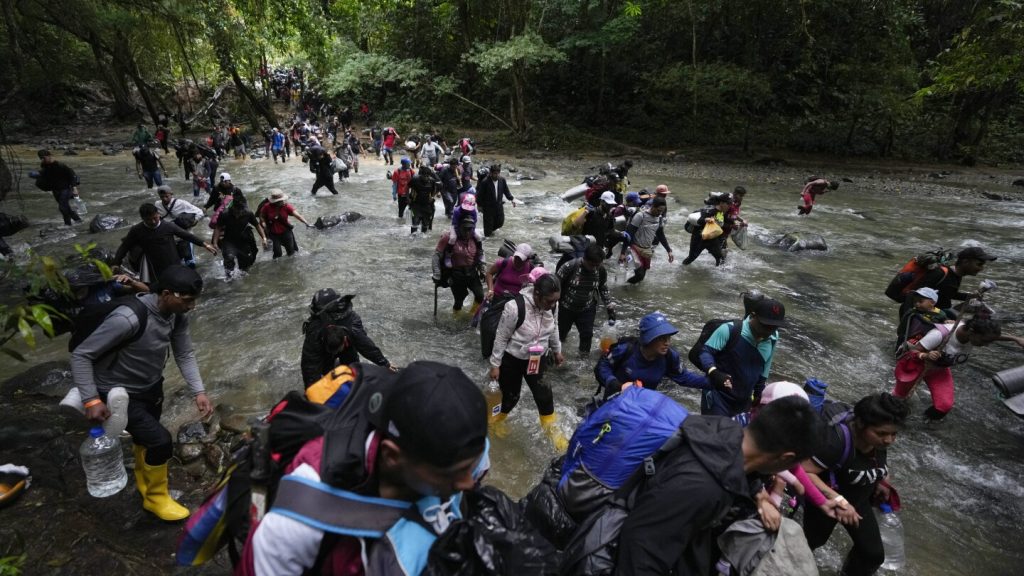Panama is set to undergo a significant shift in its immigration policy under the leadership of President-elect José Raúl Mulino, who plans to close a migration route that has been used by over 500,000 people in the past year. This route has become increasingly popular due to the help of organized crime in Colombia, offering an affordable but dangerous land route for migrants heading north. With countries like Mexico imposing visa restrictions on various nationalities, migrants have turned to the route through Panama as an alternative.
Despite the dangers of the journey through the jungle-clad Colombian-Panamanian border, thousands of migrants continue to make the trek, with reports of sexual assaults and deaths along the way. While some have managed to complete the journey in as little as two or three days, the risks are high, with many falling victim to violence and natural hazards. Despite these challenges, a significant number of migrants have already entered Panama through this route in the current year.
The United Nations International Organization for Migration has expressed concerns about the lack of safe and legal migration pathways, which often lead migrants to resort to criminal networks and dangerous routes. Mulino’s plan to shut down the migration flow is seen as a way to dissuade migrants from taking the route through Panama and to potentially reduce the risks associated with the journey. However, experts are unsure of how effective this measure will be and whether it can be fully implemented given the challenges of managing an open and uncontrolled border.
Cooperation and coordination with Colombia and other countries will be crucial for the success of the plan, as well as the logistical and financial challenges of deporting large numbers of migrants. Analysts have raised concerns about the feasibility of repatriating migrants on a large scale, citing the logistical limitations and costs involved in such an operation. While Mulino’s proposal may have the intent of reducing the flow of migrants through Panama, the underlying factors driving migration are likely to persist, leading migrants to seek alternative and potentially riskier routes.
As Panama prepares to implement these changes to its immigration policy, there is a recognition that simply closing one route may not be enough to address the broader issues related to migration in the region. The impact of these changes may be temporary, as migrants may simply shift to other routes or means of reaching their desired destinations. The success of Mulino’s plan will depend on a range of factors, including international cooperation, border security measures, and addressing the root causes of migration in the region.


